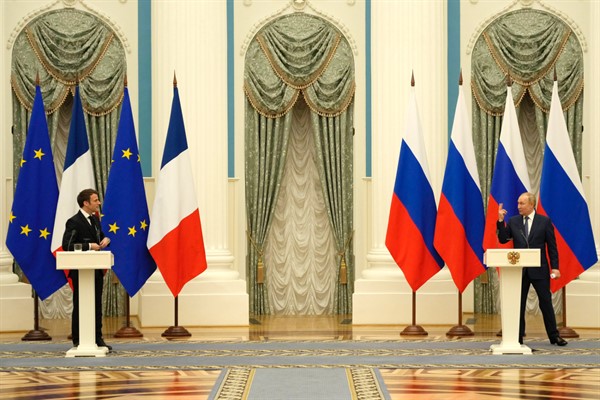British Prime Minister Boris Johnson is in Brussels today for a meeting with NATO Secretary-General Jens Stoltenberg about the ongoing crisis in Ukraine. Their meeting follows a busy diplomatic week full of high-level meetings aimed at preventing the outbreak of war near the European Union’s borders. But with the week drawing to a close, it remains to be seen how much closer to a peaceful resolution of the crisis the parties have come.
The diplomatic flurry began Monday, when French President Emmanuel Macron met with his Russian counterpart, Vladimir Putin, in Moscow. Even before he sat down with Putin, Macron’s talking points raised eyebrows when they were released to the press ahead of the meeting. “We have to be very realistic,” an excerpt of Macron’s remarks read. “We will not obtain unilateral gestures, but it is essential to avoid a deterioration of the situation before building mechanisms and reciprocal gestures of trust.”
Macron’s statement of the obvious—that Putin is unlikely to withdraw Russian forces from the border with Ukraine without something in return from the West—drew howls of protest in Washington, London and Eastern European capitals. Macron’s allusion to “the geopolitical objective of Russia today,” which he argued “is clearly not Ukraine, but to clarify the rules of cohabitation with NATO and the EU,” caused consternation, as did a reference to the “Finlandization” of Ukraine that was incorrectly attributed to him, but which actually came from a reporter. The term refers to Finland’s historical adoption of neutral status outside of NATO in order to avoid being the object of competition between the then-Soviet Union and the West.

